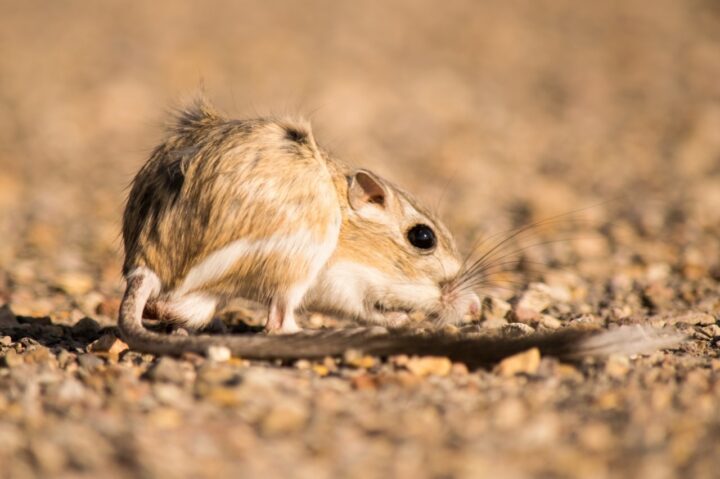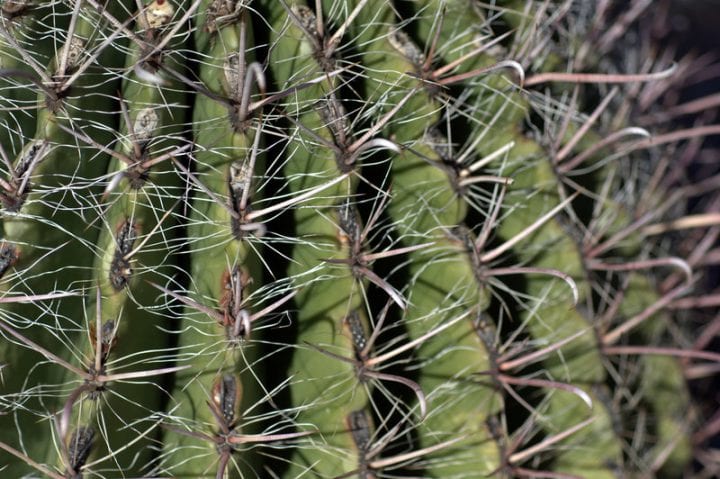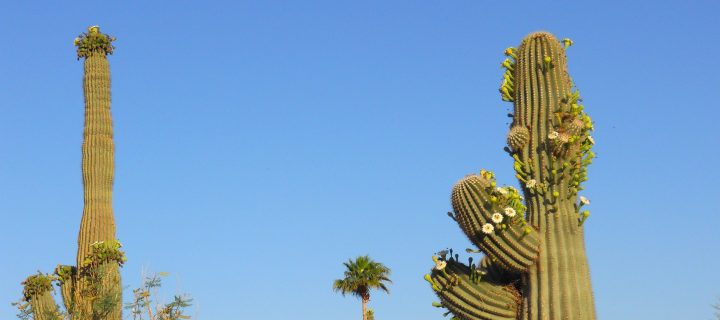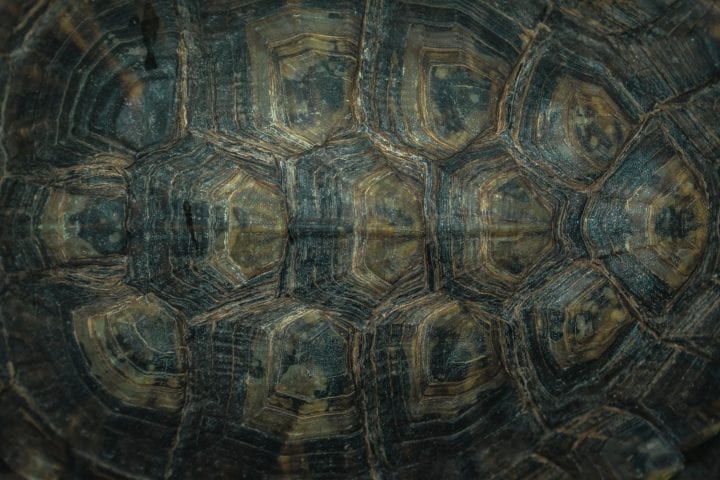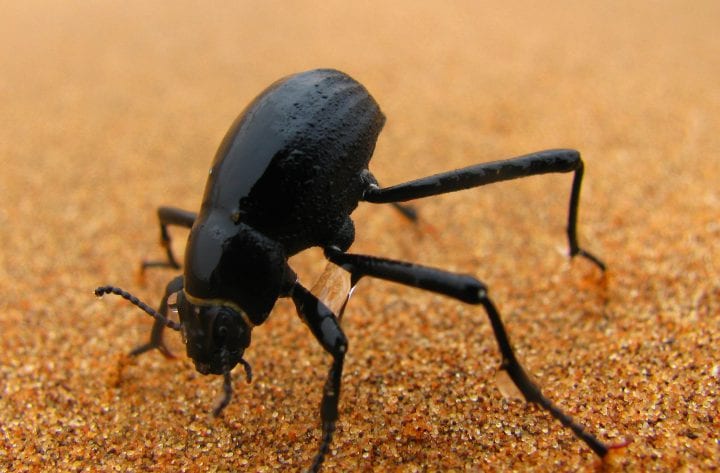National Parks protect more than scenery—they ensure that large, intact webs of life persist. And those can be a limitless source of inspiration for biomimics.
Some plants are so distinctive that national parks have been created and named in their honor. Take, for example, sequoia and redwood trees. These California coastal dwellers crush the arboreal competition with heights approaching a 25-story building. Or witness the Joshua tree. Not only can this shaggy yucca plant lay claim to its own national park in the Mojave Desert, but its comical form also is said to have inspired Dr. Seuss’s beloved Truffala trees in The Lorax.
When it comes to iconic plants, however, nothing can beat saguaros. Images of these massive cactuses in American culture range from the sublime to the silly. Whether celebrated in fine art photography or spoofed as a chorus line of tap dancers in a Daffy Duck desert animation, these majestic plants with their upraised arms have become synonymous with the Desert Southwest.
There’s no better place to see them than in Saguaro National Park. The park lies in the heart of the Sonoran Desert, a 100,000 square-mile ecological province that sprawls across parts of Arizona, California, and Mexico. Divided into two units flanking the eastern and western edges of Tucson, Arizona, the national park hosts some of the densest populations of saguaros in the Sonoran Desert. These charismatic cactuses often cover whole hillsides like matchsticks, creating what some have called “saguaro forests.”
Saguaros have provided a critical food source for people in the southwestern U.S. for at least a thousand years, and likely since shortly after the end of the last ice age. One group particularly identified with this iconic plant is the Tohono O’odham, whose present-day nation borders the southern and western boundaries of the park. So aligned is their culture with the saguaro’s seasonal cycles that the summer harvest marks the beginning of the Tohono O’odham new year. During June and July, family groups process the sweet, luscious fruits, which encircle the tips of the plant’s arms like ruby-studded crowns. The fruits, along with their protein-rich seeds, are fashioned into a variety of foodstuffs including dried cakes, beverages, and preserves. The Tohono O’odham have revered desert saguaros with good reason: the plant’s summer bounty provides fresh, locally available nutrition during a season when little else was historically available. Today, tribal members continue these seasonal traditions in their ancestral homelands within the national park.
Saguaros inspire reverence and wonder in visitors as well. As you stand at the base of one of the hillsides in Saguaro National Park, you can’t help but ask: How can a place that receives an average of 12 inches of annual rainfall support such majestic multitudes? And that’s just the start. In addition to saguaros, the park hosts more than 3,500 other species of plants, some 70 species of mammals, 200 species of birds, 50 species of reptiles and thousands of species of invertebrates.
In order to flourish, these desert organisms must negotiate a host of challenges. Desert soils, for example, are low in nutrients and organic matter. And temperatures swings are extreme, approaching 120 degrees in the summer and dipping below freezing in the dead of winter.
Perhaps the biggest obstacle of all, however, is the scant and unpredictable rainfall. Saguaro National Park, for example, like the Sonoran Desert more broadly, is governed by a bimodal pattern of rainfall; that is, half of its annual 12 inches of precipitation comes from gully-washing downpours in the summer and the other half from prolonged gentle showers in the winter.
In the shoulder seasons, however, desert organisms must be able to withstand drought since they receive little to no water from the sky. So the question is: how have the organisms in the park leveraged scarcity to produce abundance and tapped the power of limits to create a place of astounding biological richness?
To thrive in the desert, organisms must be able to capitalize on its boom-and-bust pattern of rainfall. Few organisms meet this challenge more effectively than saguaros. With the onset of rain, for example, the cactus sprouts special just-in-time rootlets. Growing mere inches beneath the surface, these opportunists are able to harvest moisture from rainfalls that often are too brief to soak deeply into the ground. Together with more permanent roots, they can help mature saguaros absorb an astounding 200 gallons of water in a single rainstorm. Because they are costly to maintain, the rootlets die back once soils dry out again only to resprout when moisture becomes available.
Like other succulents, saguaros bank this excess water in their tissues. To accommodate the sudden influx of water, saguaros feature vertical pleats in their stems and arms that expand like an accordion when the plant swells with rainwater and contract as tissues dry out during droughty intervals.
Saguaros protect their precious water stores from evaporation with a tough, waxy skin. The vertical pleats—a built-in self-shading mechanism—provide additional protection against water loss by helping to minimize heat gain from the sun. Stitched along the edges of these seams is a bristling of spines that also helps deflect the glare of the sun.
These and other strategies allow saguaros to attain improbable heights and mass. Mature cactuses can grow up to 50 feet tall and weigh six tons. Individual plants can reach 175 years of age.
Perhaps it’s because of their great size and resemblance to the human form that saguaros often have been misrepresented in American pop culture. From Hollywood movies, souvenirs and tourist postcards to TV ads and literary nonfiction, the Sonoran Desert has been depicted as a place of menace and deprivation. Patrolling these so-called desolate expanses are resident saguaro bullies that snicker at newbie tourists who unwittingly traipse through the hazards of spiny plants. Some are even attacked by saguaros with muscled arms.
The ecological truth, however, couldn’t be more different from these popular fictions. The saguaro’s adaptations to intermittent rain, for example, not only enable these gentle giants to thrive but they also create conditions that support a host of other organisms. Desert birds such as gilded flickers and Gila woodpeckers excavate nesting cavities in saguaros. Insulated from the hot desert air by the cactus’s thick, moist tissues, these hollows can be 15 degrees cooler than the surrounding air temperatures. Unoccupied nurseries are reused later by other tenants including tiny owls that find secluded daytime bedrooms in the saguaro’s dark reaches.
Adaptations that capture, store, protect and use water frugally are among the strategies that saguaros use to meet the challenges of intermittent rainfall. In the process, they multiply opportunities for other organisms to feed and breed, nest and rest. But they aren’t the only organisms that tap the power of limits to create abundance. Here are a few more brilliant tips from some of the other frugal innovators you’ll find in Saguaro National Park.
Explore the Collection
In the biological strategies below, get to know the species of Saguaro National Park more closely. Discover their remarkable individual adaptations, and explore the fascinating ways they interact and create a rich ecological community in a harsh, desert environment.



